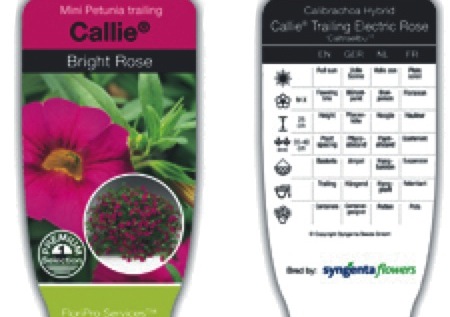A plant label can give you a lot of information – sometimes. At other times, all it will give you is the name of the plant, and you have to do some research.
The topic came up when a reader asked what he could do to keep his tomato plants from turning yellow and dying. This was an experienced gardener, so I assumed he had been watering and feeding the plants properly. I thought it was probably a disease, and that he should plant tomatoes that are resistant to all diseases.
A label showing VFNAT, for example, would be resistant to Verticillium Wilt, Fusarium Wilt (and with three F’s, resistant to three types of Fusarium), Nematodes, Alternaria or early blight and Tobacco Mosaic Virus.
When I talked with Lois Berg Stack, ornamental horticulture professor at the University of Maine, it turns out I was only part right – which is why she is a garden expert and I am a guy who writes about gardening.
“Plant diseases may be a mystery to the grower if they haven’t had them tested,” she said. “You have to know something about the diseases to interpret them.”
A lot of garden centers do not use labels from the company providing the seeds or the plants, so the only information on the label will be the variety.
“Tomato labels are kind of generic,” said Tom Estabrook of Estabrook’s, which has shops in Yarmouth, Scarborough and Kennebunk. “They will say ‘Big Boy’ or ‘Early Girl’ and maybe some kind of disease resistance, but you would be better off talking to someone at the garden center to determine what is best for you.”
One piece of information Stack says people should know – on tomatoes or anything else – is the ultimate size of the plant and the recommendations on how far apart you should place them.
“One problem that I see repeated over and over,” she said, “is that people take home a plant, and it is so little, and they put them 6 inches apart. It is kind of hard to plant tomatoes 3 feet apart when they are so small, but you actually get a better yield by placing them farther apart.”
She said that with tomatoes, an important piece of information is whether they are “determinate” or “indeterminate.” Determinate tomatoes grow better in cages, so if you are buying those, you might want to buy some cages while you are at the garden center. And if you are buying an indeterminate plant, you should plan on having a pole to tie it to.
For shrubs and perennials, a label will have all sorts of other information you will need before you decide to buy the plant. The two most important are how hardy the plant is and how much light it needs.
Hardiness is determined according to the U.S. Department of Agriculture hardiness zones. Most of coastal Maine is Zone 5, inland Maine is Zone 4, and the far reaches of inland Aroostook County can be Zone 3.
Different companies have different ways of telling you whether a plant needs full sun or prefers partial sun or even full shade.
The tags also should tell you the mature height of the plant. That is usually the height and width of the plant after it has been growing, for a tree or shrub, 10 to 20 years. The plant will continue growing after that, but it will grow more slowly.
As with Stack’s advice on tomatoes, you’ll want to provide enough room for the plant, according to its mature size listed on the label.
Information on tags for branded or patented plants is even more extensive, but Estabrook said the best source for information is still the garden center professional.
When shops sell plants from companies such as Proven Winners, they have to buy special plant tags or labels, and often special pots, which raises the price of the product for the consumer.
“Part of the issue with doing tagging for all across the country is that, while it is good information, it is somehow generic,” Estabrook said. “With Endless Summer hydrangeas, they have a recommendation for pruning that is different from what we recommend at the garden center. In Maine, in order to get the most in blossoming, we take a different spin on what they give us.”
I recently received a shrub catalog from Proven Winners Color Choice that included a full-page spread explaining their plant catalogs.
The example used is Little Lime hydrangea, which is a dwarf version of Limelight, growing only 5 feet tall and 5 feet wide. While it is sold as Little Lime, which is a trademark name, it also has the name hydrangea paniculata “Jane.”
Hydrangea paniculata is the botanical name, but there are dozens of hydrangea paniculatas on the market. It also has the cultivar name “Jane,” which no one ever uses but is patent-protected. And it has the plant-patent numbers for the plant.
All of which is probably more information than you need. But still, you need to read the labels in the plants you’re purchasing.
Tom Atwell has been writing the Maine Gardener column since 2004. He is a freelance writer gardening in Cape Elizabeth and can be contacted at 767-2297 or at:
tomatwell@me.com
Send questions/comments to the editors.



Success. Please wait for the page to reload. If the page does not reload within 5 seconds, please refresh the page.
Enter your email and password to access comments.
Hi, to comment on stories you must . This profile is in addition to your subscription and website login.
Already have a commenting profile? .
Invalid username/password.
Please check your email to confirm and complete your registration.
Only subscribers are eligible to post comments. Please subscribe or login first for digital access. Here’s why.
Use the form below to reset your password. When you've submitted your account email, we will send an email with a reset code.